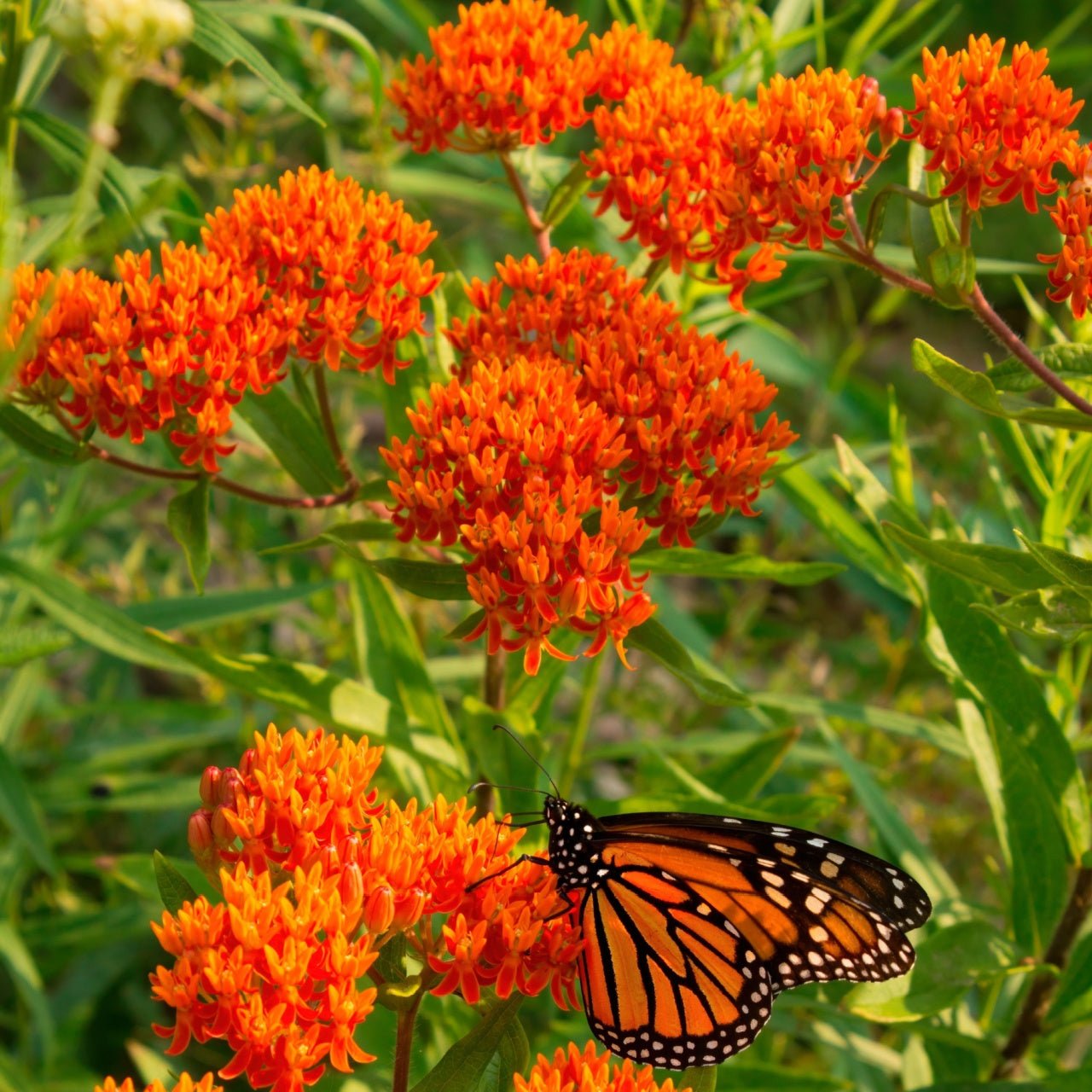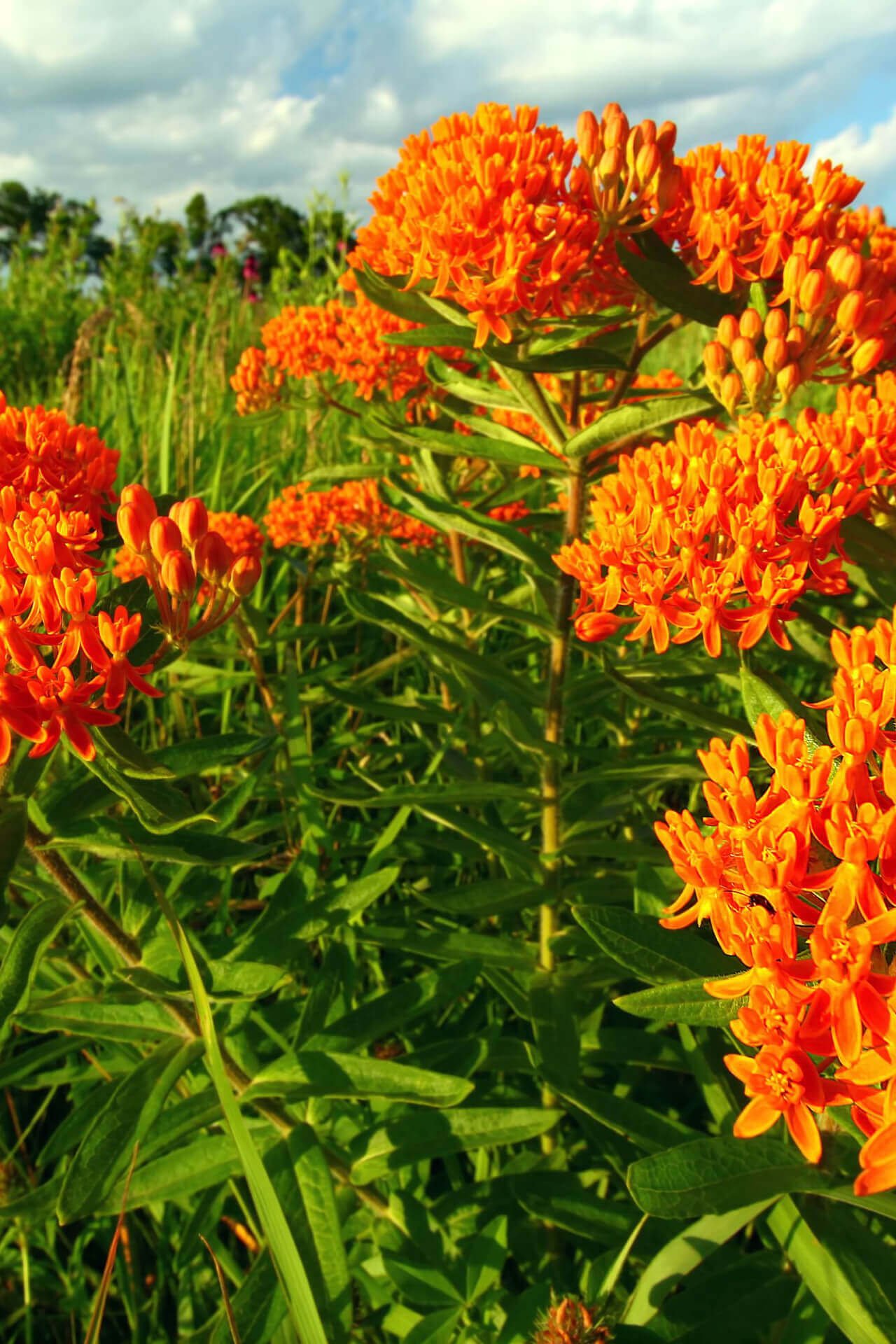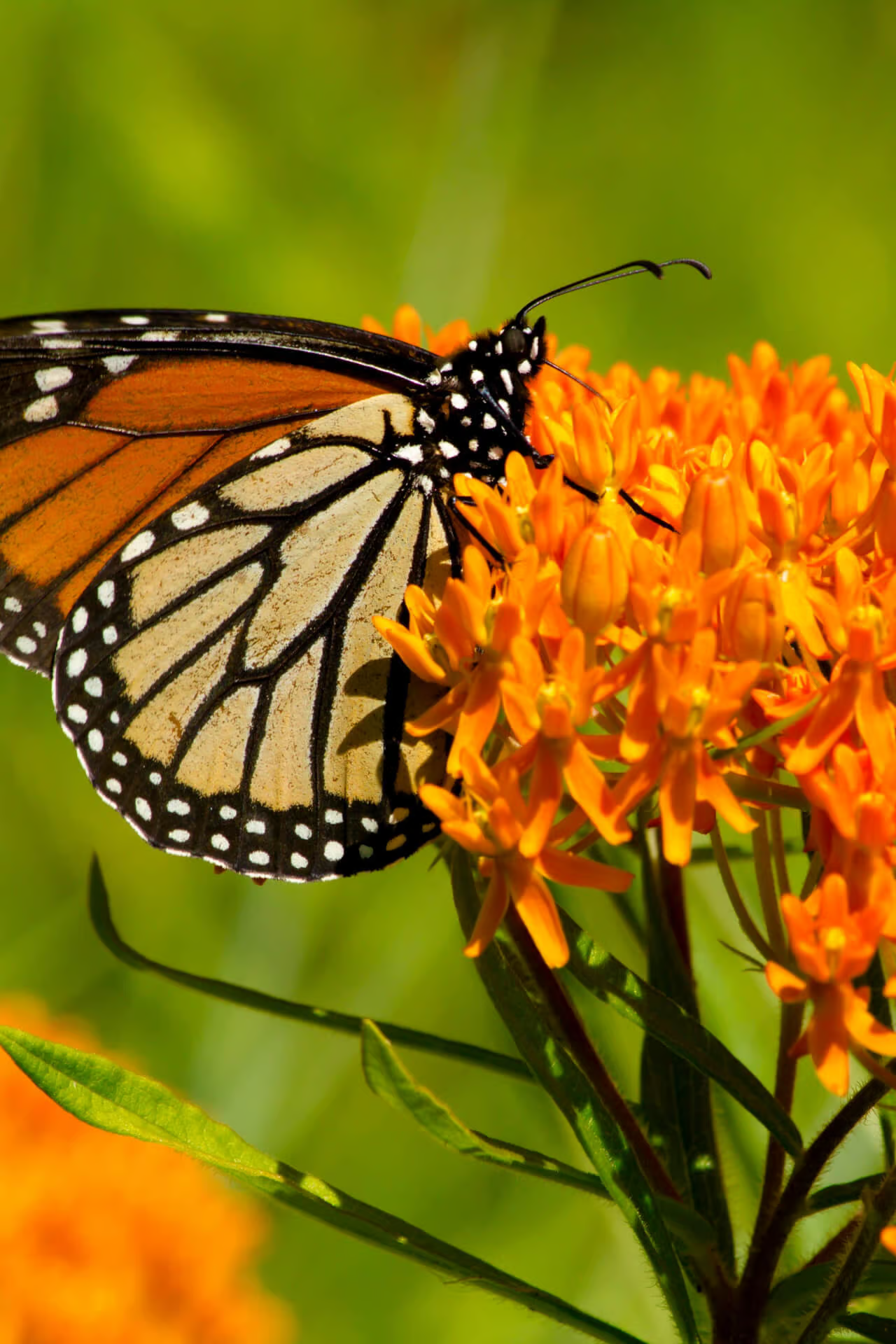




Butterfly Milkweed
Attracts vibrant Monarch butterflies
Thrives in drought-tolerant conditions
Natural habitat restoration
Thrives in
ZONE 3ZONE 4ZONE 5ZONE 6ZONE 7ZONE 8ZONE 9ZONE 10This plant ships:
Fall 20251 Year Guarantee on all plants
Butterfly Milkweed - Asclepias Tuberosa
This stunning, remarkable plant graces the eastern coast of the United States and down into the south. It is a lush, leafy plant with tiny orange blossoms that are highly attractive to butterflies. This plant comes from a family of plants referred to as “Milkweed” because of their unique, milky substance stored inside their stems, which is visible when broken. Butterfly milkweed is a specific type of milkweed that happens to attract butterflies. It is the host plant for the famed Monarch Butterfly and supports its full cycle of life: from egg to caterpillar to butterfly and back again.
Plant Details - Butterfly Milkweed
Family: Apocynaceae
Light Requirement: Full Sun
Water Needs: Minimal
Height: 3-5 ft
Spread: 2 ft
Growth Rate: Rapid
Soil Preference: Well drained, Rocky, Sandy
Bloom Time: June - August
Flower Color: Orange
Wildlife Value: Monarchs and other butterflies, caterpillars
Notable Characteristics - Butterfly Milkweed
The Butterfly Milkweed is a lush, leafy plant with many oblong, unlobed leaves. The stem is sturdy and covered in fine hairs. When broken, it gives off a sticky, white substance, similarly to Dandelions. The foliage of this plant is a lighter, bright green which contrasts strikingly with its tiny orange flowers. The blooms are flat topped and contain multiple sprigs of flowers clustered tightly together. The flowers themselves have ten pointed petals in two layers, and a yellow center. They are a delicate, eye catching flower among the springy green foliage, and are a gorgeous addition to any garden.
Landscape and Maintenance
A native of the eastern and southern United States, the orange flower thrives in open meadows, grasslands, prairies, and roadsides. It is highly tolerant of drought conditions, as well as infertile soil, making Butterfly Milkweed a hardy plant. It does not spread aggressively but once established it is difficult to move, making it a perfect plant neighbor and garden addition.
This Is How Your Plants Will Look upon Delivery

Bloom Season
Summer
Bloom/Foliage Color
Orange
Height at Maturity
Over 12"
Care
Butterfly Milkweed flourishes in well-drained soil and is tolerant to drought. Water it moderately, permitting the soil to dry between waterings. Prune finished blooms to promote new growth and remove weeds to reduce competition. Mulching around the plant is also beneficial.
Plant Reproduction
Butterfly Milkweed spreads via seeds dispersed by wind and insects.
Shipping date depends on the date displayed and chosen when you order from the product's page.
We only accept returns on plants verified dead. If you think your plants have died, we offer a 1 year warranty, please use this File a Claim Link to verify dead plants and start with return warranty process.







Pollinator Magnet:
Attracts a variety of beneficial insects like butterflies, bees, and hummingbirds, enhancing the health and diversity of your garden. It’s an excellent way to support local pollinator populations.
Native Plant:
Being native to North America, it supports local wildlife and ecosystems. It’s well-adapted to regional conditions, ensuring robust growth and sustainability.
Resilient and Low Maintenance:
This wildflower’s unwavering resilience makes it easy to care for while enduring various conditions, ensuring it remains a standout feature in your garden.
Beautiful Cut Flowers:
The striking blooms make excellent cut flowers for bouquets, adding a touch of natural beauty to your indoor decor. Brighten up your home with flowers that last.
Caring Tips
How do I care for my Butterfly Milkweed?
Each box contains detailed care instructions and information about your product. But here's the basics.
Care Tips
Butterfly Milkweed flourishes in well-drained soil and is tolerant to drought. Water it moderately, permitting the soil to dry between waterings. Prune finished blooms to promote new growth and remove weeds to reduce competition. Mulching around the plant is also beneficial.
Light Requirements
Butterfly Milkweed thrives in full sun, requiring at least 6 hours of direct sunlight daily. It prefers well-drained soil and benefits from the bright, warm conditions to produce vibrant flowers and attract pollinators.
Hardy Planting Zones
3 • 4 • 5 • 6 • 7 • 8 • 9 • 10
Header
Use this content to share information about your store and products.
Frequently Asked Questions
How often should I water my plants?
How do I know if my plant is getting too much or too little sunlight?
What should I do to prepare my plants for winter?
What are the signs that my plant needs fertilizing?
How can I prevent pests from damaging my plants?
How do I choose the right plant for my climate zone?







